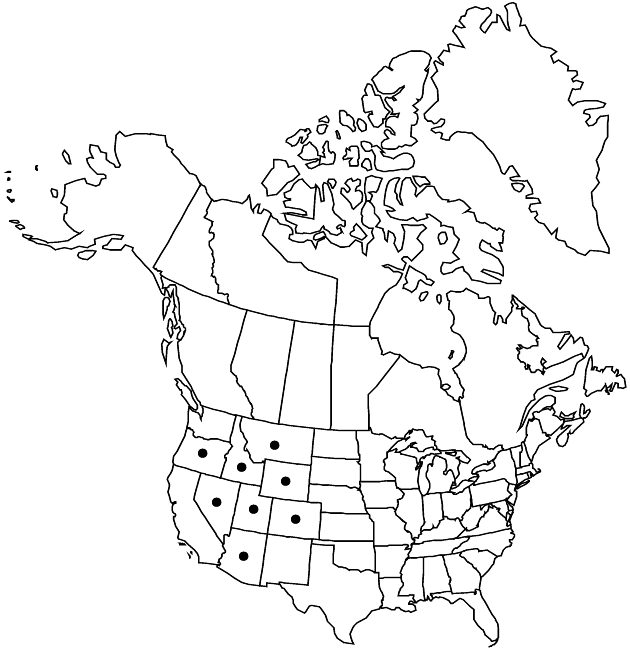Balsamorhiza hispidula
Ann. Missouri Bot. Gard. 22: 137, fig. 3, plate 5. 1935.
Plants 6–40 cm. Leaves: blades bright green, narrowly lance-elliptic to lanceolate, (6–) 15–25 (–40) × (3–) 5–9+ cm (1–2-pinnatifid, primary lobes lanceolate to oblanceolate, 10–45 × 2–15 mm, secondary lobes usually divergent, antrorse), bases ± cuneate, ultimate margins usually entire (± revolute and/or thickened, often ciliate), apices acute to attenuate, faces ± hispidulous to hirtellous (glanddotted as well; veins ± scabrous). Heads borne singly. Involucres campanulate to hemispheric 10–25 mm diam. Outer phyllaries lanceolate to linear, 12–20 mm, not surpassing inner, apices acute to attenuate (margins often ciliate). Ray laminae 15–40 mm (abaxially glabrous).
Phenology: Flowering Apr–May.
Habitat: Basalt scablands and desert-steppe areas, juniper and sagebrush scrublands
Elevation: 1800–2500 m
Distribution

Ariz., Colo., Idaho, Mont., Nev., Oreg., Utah, Wyo.
Discussion
Distribution of Balsamorhiza hispidula is highly disrupted in the southern part of its range.
Selected References
None.
Lower Taxa
"broader" is not a number.